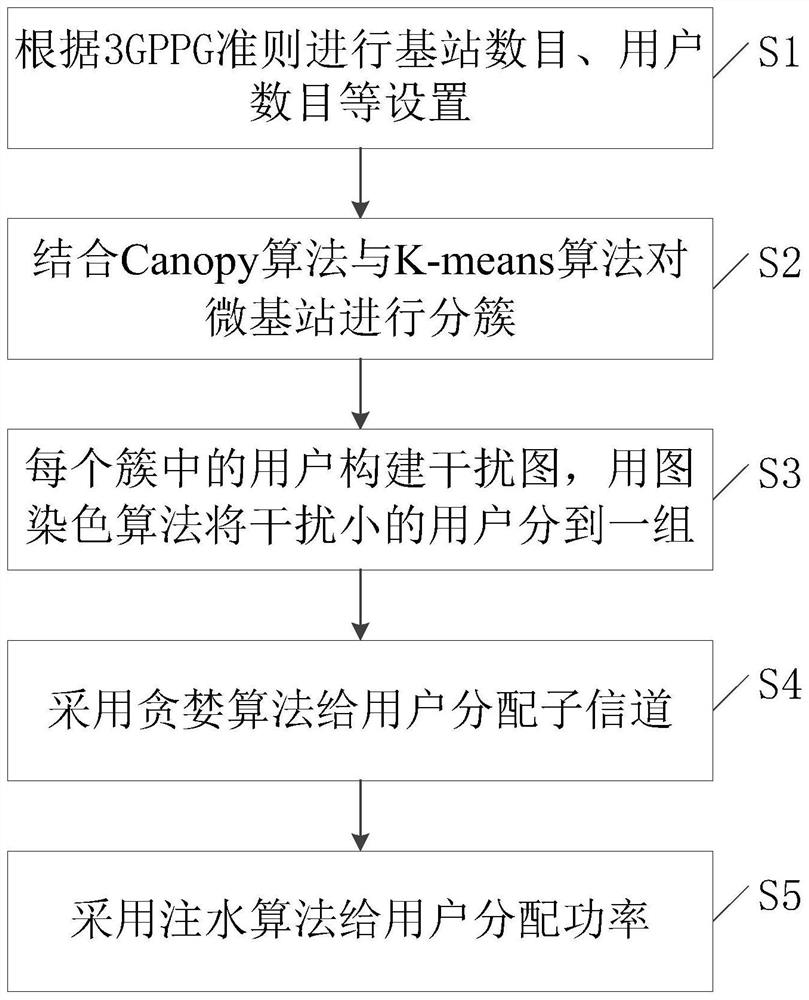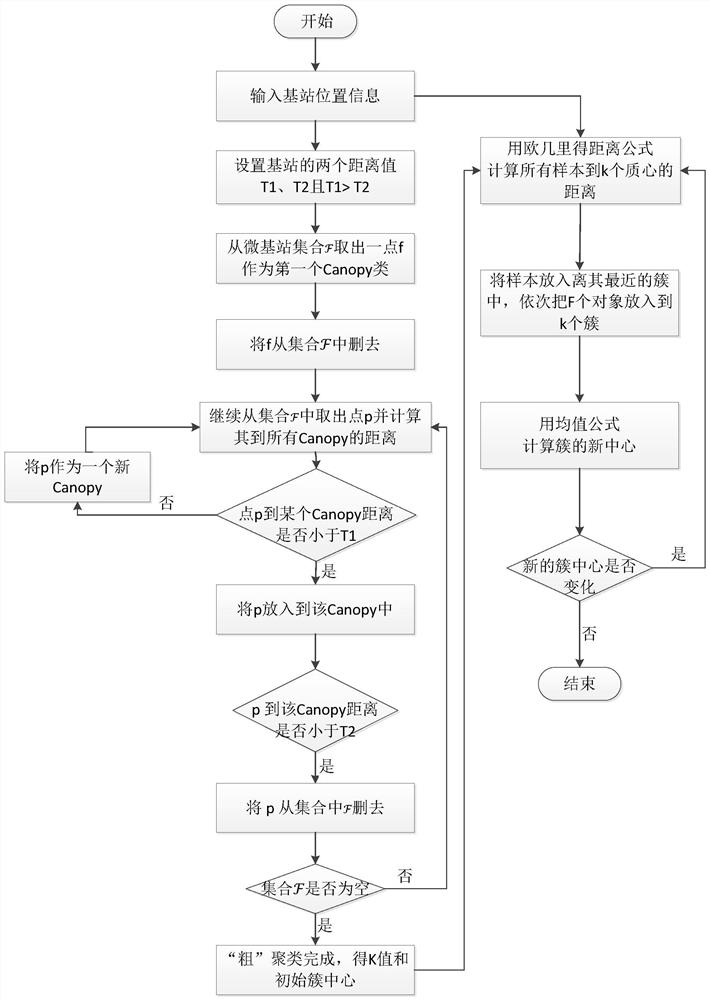Resource allocation method based on hybrid clustering in ultra-dense network
An ultra-dense network and resource allocation technology, applied in the field of ultra-dense network resource allocation, can solve problems such as inaccurate clustering results, user interference, and inaccurate resource allocation, so as to reduce peer interference and improve throughput and performance Effect
- Summary
- Abstract
- Description
- Claims
- Application Information
AI Technical Summary
Problems solved by technology
Method used
Image
Examples
Embodiment Construction
[0070] The technical solutions in the embodiments of the present invention will be clearly and completely described below with reference to the accompanying drawings in the embodiments of the present invention. Obviously, the described embodiments are only a part of the embodiments of the present invention, rather than all the embodiments. Based on the embodiments of the present invention, all other embodiments obtained by those of ordinary skill in the art without creative efforts shall fall within the protection scope of the present invention.
[0071] The purpose of the embodiments of the present application is to provide a resource allocation method based on hybrid clustering in an ultra-dense network, so as to solve the problem that the overall network benefit is not high due to interference in an ultra-dense network.
[0072] A specific implementation of a resource allocation method based on hybrid clustering in an ultra-dense network, such as figure 1 and Figure 5 As ...
PUM
 Login to View More
Login to View More Abstract
Description
Claims
Application Information
 Login to View More
Login to View More - R&D
- Intellectual Property
- Life Sciences
- Materials
- Tech Scout
- Unparalleled Data Quality
- Higher Quality Content
- 60% Fewer Hallucinations
Browse by: Latest US Patents, China's latest patents, Technical Efficacy Thesaurus, Application Domain, Technology Topic, Popular Technical Reports.
© 2025 PatSnap. All rights reserved.Legal|Privacy policy|Modern Slavery Act Transparency Statement|Sitemap|About US| Contact US: help@patsnap.com



